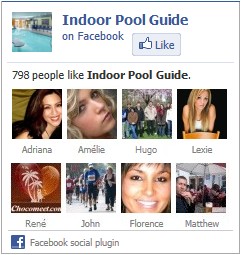Overview Maintaining satisfactory environmental conditions in the pool hall and all other areas of the building is essential for the comfort of pool users, staff and spectators—and for the pool to operate successfully over a reasonably extended working life. The heating and ventilation of the pool hall needs to take into account a wide range […]
Monthly Archives: March 2012
Coagulants enhance the removal of dissolved, colloidal or suspended material by bringing it out of solution or suspension as solids (coagulation). These solids then clump together (flocculation), producing a floc, which is more easily trapped in a filter. Coagulants will be less effective where pH values are above the recommended operating range. A minimum alkalinity […]
Overview Several key areas are important here: • Clarity • Turbidity • Filtration • Backwashing • Flocculation or coagulation. Clarity of pool water is critical for customer safety. It should be possible to see the bottom of the pool at its deepest point. If not, there is a physical danger to anyone in distress below […]
Three basic circulation designs for a traditionally shaped pool tank. Each has advantages and disadvantages, and careful consideration must be given before choosing the appropriate option and building a pool; changes are often not possible once a pool has been built. Each option is discussed below. Floor Inlet, Surface Outlet This common arrangement offers good […]
Overview The purpose of circulating water is simply to make sure that filtered, disinfected water reaches all areas of the pool, and polluted water is removed efficiently. This requires an understanding of the circulation patterns within the pool. Like the circulation rate and turnover period, circulation patterns are influenced by the depth, volume and shape […]
About 250 mL of sample is required to conduct all recommended tests. Sterile plastic bottles are recommended because of the risk of glass breakage. Bottles should be pre-treated with sodium thiosulphate to neutralise chlorine or bromine, thereby giving a true indication of the water quality experienced at the time of sampling. Laboratories will normally prepare […]
Overview Certain infections have been associated with the use of swimming pools and spa pools. These usually result from poor management of water treatment leading to the survival of pathogenic organisms introduced by pool users. Cryptosporidium is the only organism of pathogenic significance that can withstand properly treated pool water. However, as pool water can […]
Overview Best Practice Model – Photometers or comparators should be used for all manual chemical tests. – Operators should prescribe their desired range of operating parameters within the Regulatory range. – Operators should be competent in the use of test kits. Test Kits Photometers or comparators, for commercial applications, using tablet or powdered reagents are […]
Overview All pool disinfection systems should be designed to match the expected rate of disinfectant consumption at the worst conditions expected. For some pools this may be bright sunshine at 40˚C and standing room only. The higher the pool turnover rate, the easier it is to circulate the disinfectant, measure and respond to demand. Some […]
Increase Total Alkalinity • Add 1 kg sodium bicarbonate per 10,000 L of pool water to increase the total alkalinity by 50 ppm. Decrease Total Alkalinity • Dilution of pool water will lower alkalinity in most situations. If consistently high total alkalinity is creating problems, expert advice should be sought on the choice of disinfectant […]

